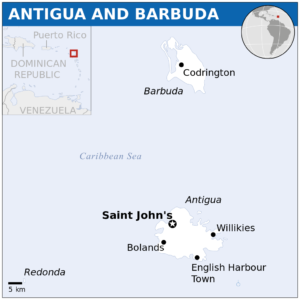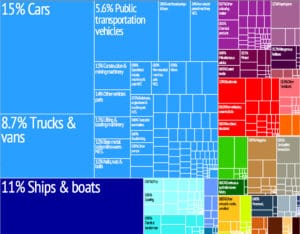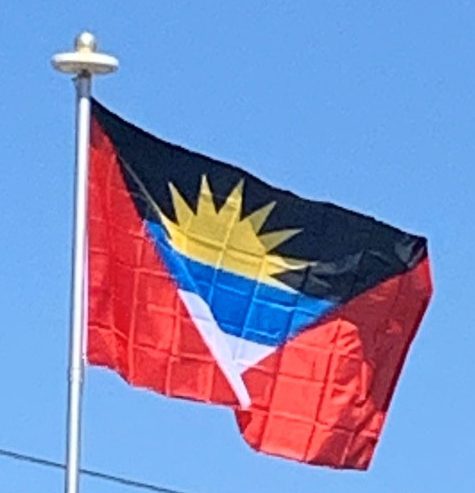
The shorelines of both islands are greatly indented with beaches, lagoons, and natural harbors. The islands are rimmed by reefs and shoals. There are few streams as rainfall is slight. Both islands lack adequate amounts of fresh groundwater.
Antigua and Barbuda are the only inhabited islands although the country includes numerous small rocky islets close to shore as well as the more distant Redonda Island.
Economy:
Tourism dominates the economy, accounting for more than half of the gross domestic product (GDP). Antigua is famous for its many luxury resorts. Weak tourist activity since early 2000 has slowed the economy, however, and squeezed the government into a tight fiscal corner.
Investment banking and financial services also make up an important part of the economy. Major world banks with offices in Antigua include the Royal Bank of Canada (RBC) and Scotiabank. Financial-services corporations with offices in Antigua include PriceWaterhouseCoopers.
The twin-island nation’s agricultural production is focused on its domestic market and constrained by a limited water supply and a labor shortage stemming from the lure of higher wages in tourism and construction work.

Manufacturing is made up of enclave-type assembly for export, the major products being bedding, handicrafts and electronic components. Prospects for economic growth in the medium term will continue to depend on income growth in the industrialized world, especially in the United States, from which about one-third of all tourists come.
Following the opening of the American University of Antigua College of Medicine by investor and attorney Neil Simon in 2003, a new source of revenue was established. The university employs many local Antiguans and the approximate 1000 students consume a large amount of the goods and services.
Antigua and Barbuda also utilizes an economic citizenship program to spur investment into the country.
Transportation:
Antigua and Barbuda’s transport systems include both public and privately run services. Roads in the country are steep, winding, unpaved, and full of potholes. Driving is on the left-hand side. Volcanic ash which sometimes covers roads can make them slippery. The speed limit is set at 40 mph, but it isn’t well-enforced. Because there are few traffic signs, driving in unfamiliar areas can be confusing.
Public transportation vehicles contain the letters “BUS” for buses or “TX” for taxis on their yellow licence plates. The government regulates taxi service, setting fixed fares rather than using a metered system. Taxi cabs are supposed to keep a copy of the rates inside the vehicle. On Antigua, taxis are easily found, particularly at the airport and at major hotels. Many taxi drivers also will act as tour guides.
Buses operate from 5:30 a.m. to 6:00 p.m. daily on Antigua, running between the capital city, St. John’s, and various villages. However, buses do not stop at the airport or the northern tourist area. Although departure times are often left up to the driver, buses generally follow a set schedule. Most buses have their routes posted in the front windows, and they’re usually privately owned mini-vans seating about 15 people. St. John’s has two bus stations, the East Bus Station near the Botanical Gardens on Independence Ave and another one on Market St. near the Central Market. Several buses are also available on Barbuda.
